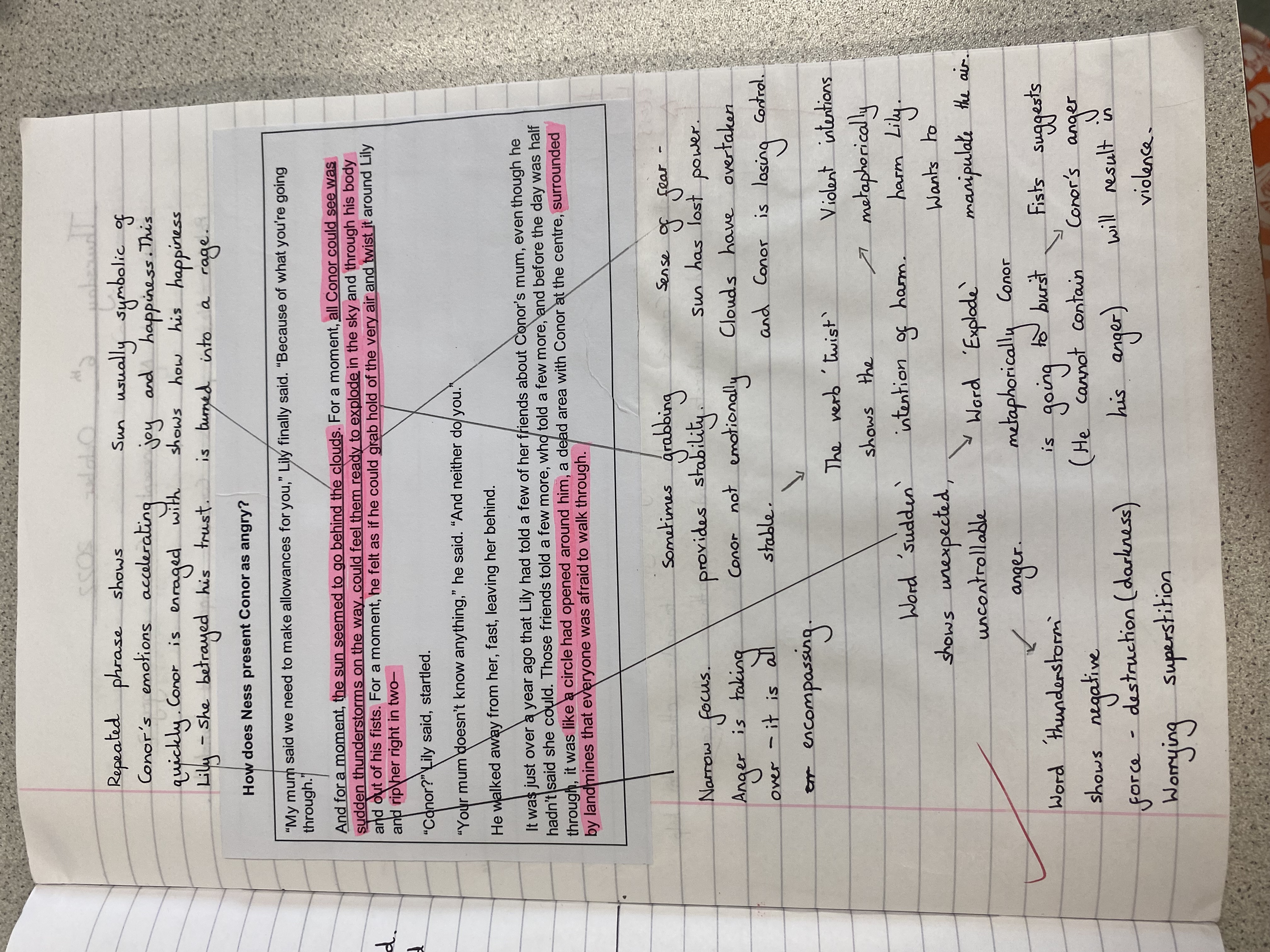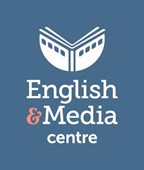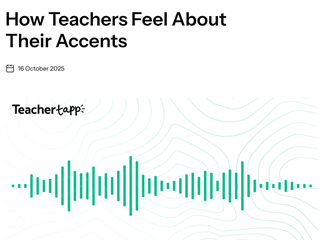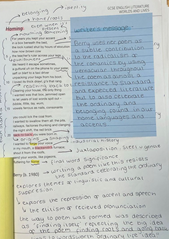If you read our first blog post, you’ll know that we spent last academic year exploring the state of assessment in KS3 English. (If you didn't we suggest that you go back and read it to make the most of this one!) We outlined what we found to be the dominant model of assessment in the secondary school English departments we worked with and spoke to: a single piece of writing worked towards throughout a half termly unit of work, with results collected to feed into whole school data. We set out some of the issues with this, suggesting that it has significant limitations as a form of assessment and distorts learning more generally.
In one of our project schools, students in year 7 were following the dominant assessment model while studying A Monster Calls. Here, we’re going to look at how this worked in practice. We'll think about the work that built up to the assessment and the assessment piece itself. What we found was that work on the novel was reduced to two separate attempts at analysing extracts in the style of GCSE Literature questions. The first attempt was referred to as ‘the formative’; the second as ‘the summative’. In other words, the purpose of the first task was solely to help the students complete the same kind of question a second time more effectively. Opportunities for other kinds of response, which might develop a deeper understanding of the novel, were consequently crowded out.
You can see how this looked in the books of two students here. The assessment preparation following ‘the formative’ and building up to ‘the summative’ is included in a PDF appendix, which we would urge you to take a look at. These pieces of writing were the only ones of a significant length in the exercise books from this unit of work, and the only written evidence teachers had to determine how well students had read and could analyse the novel.
‘The formative assessment’
Student A
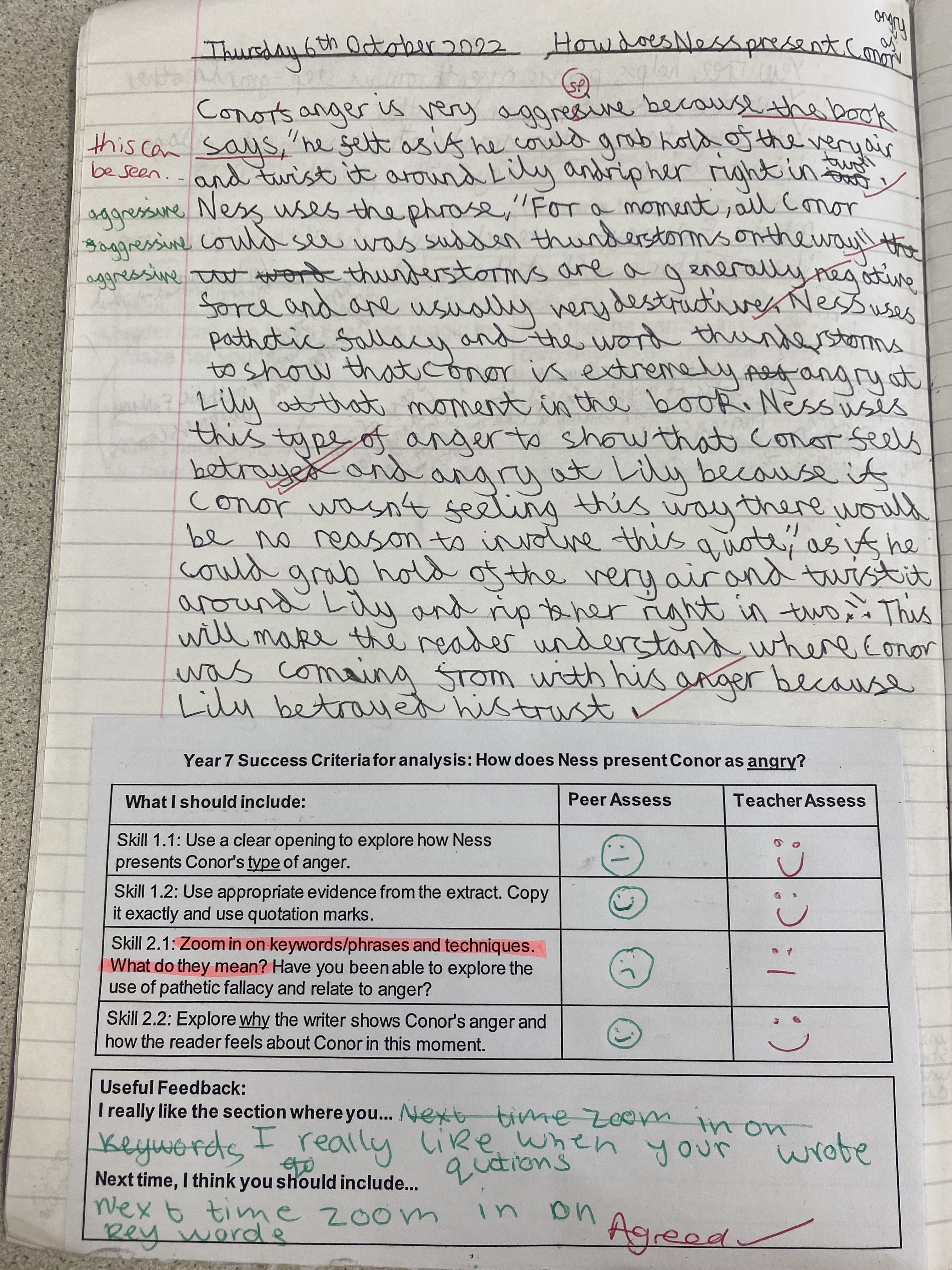
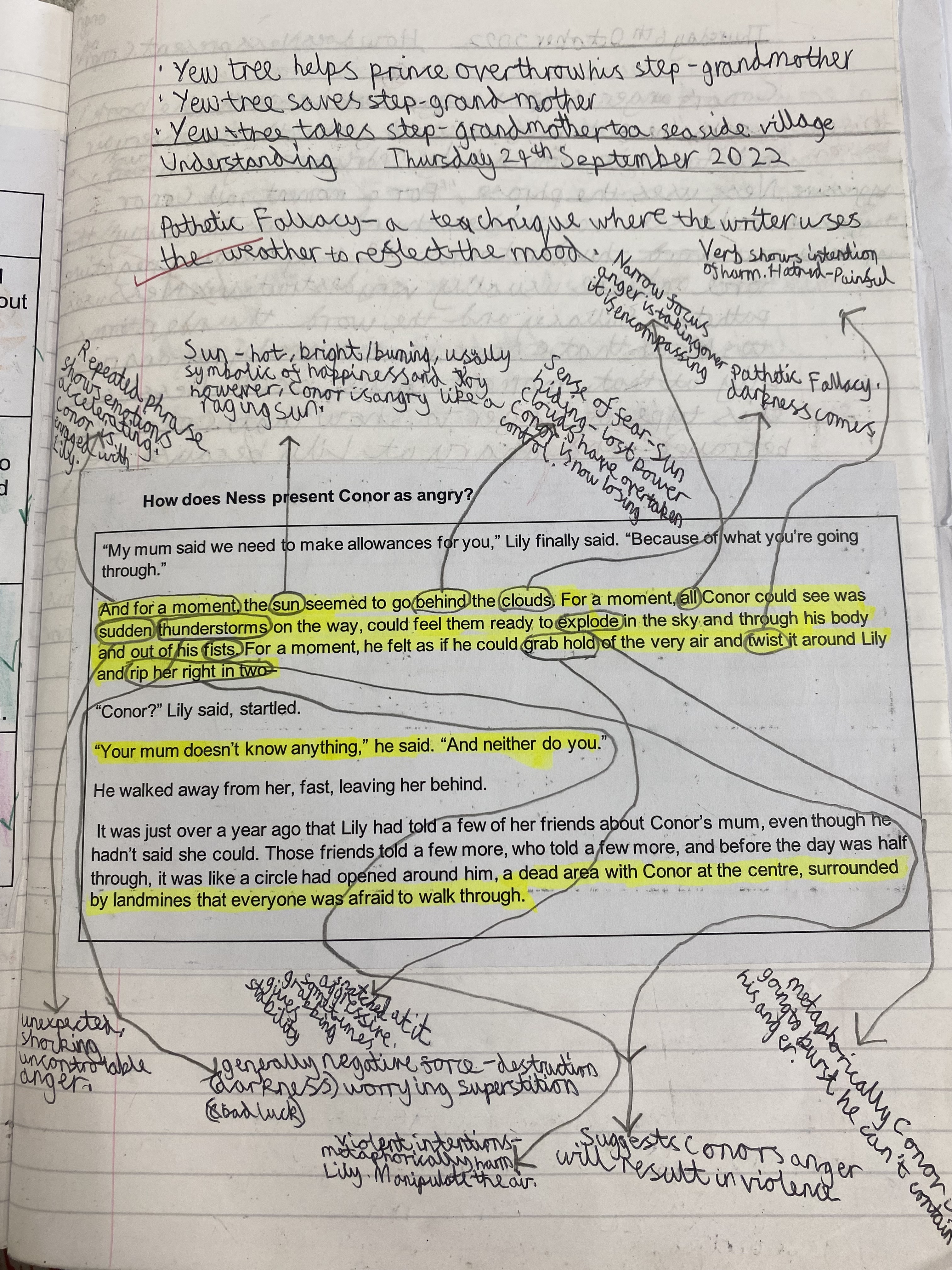
Student B
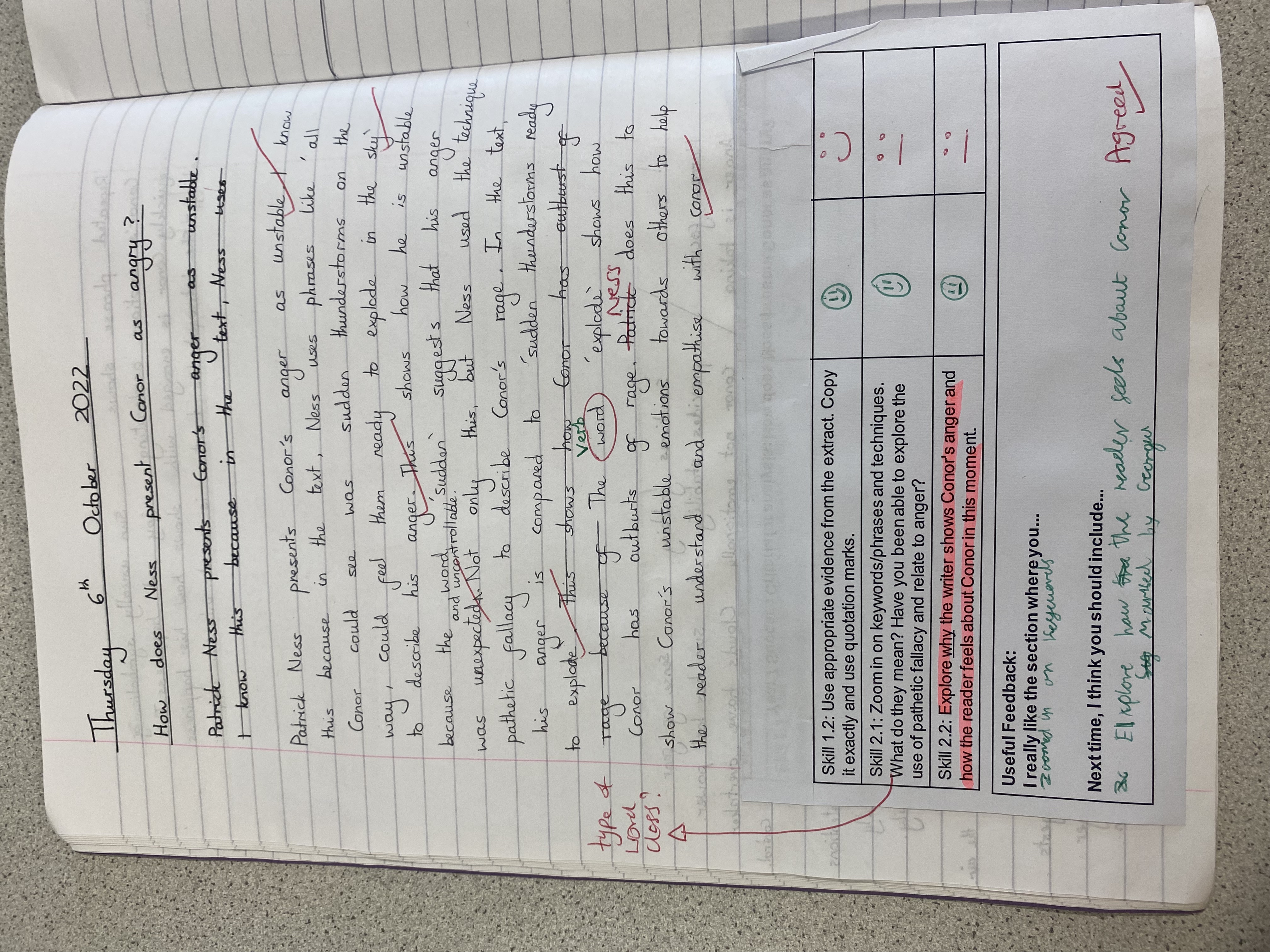
‘The summative assessment’
Student A
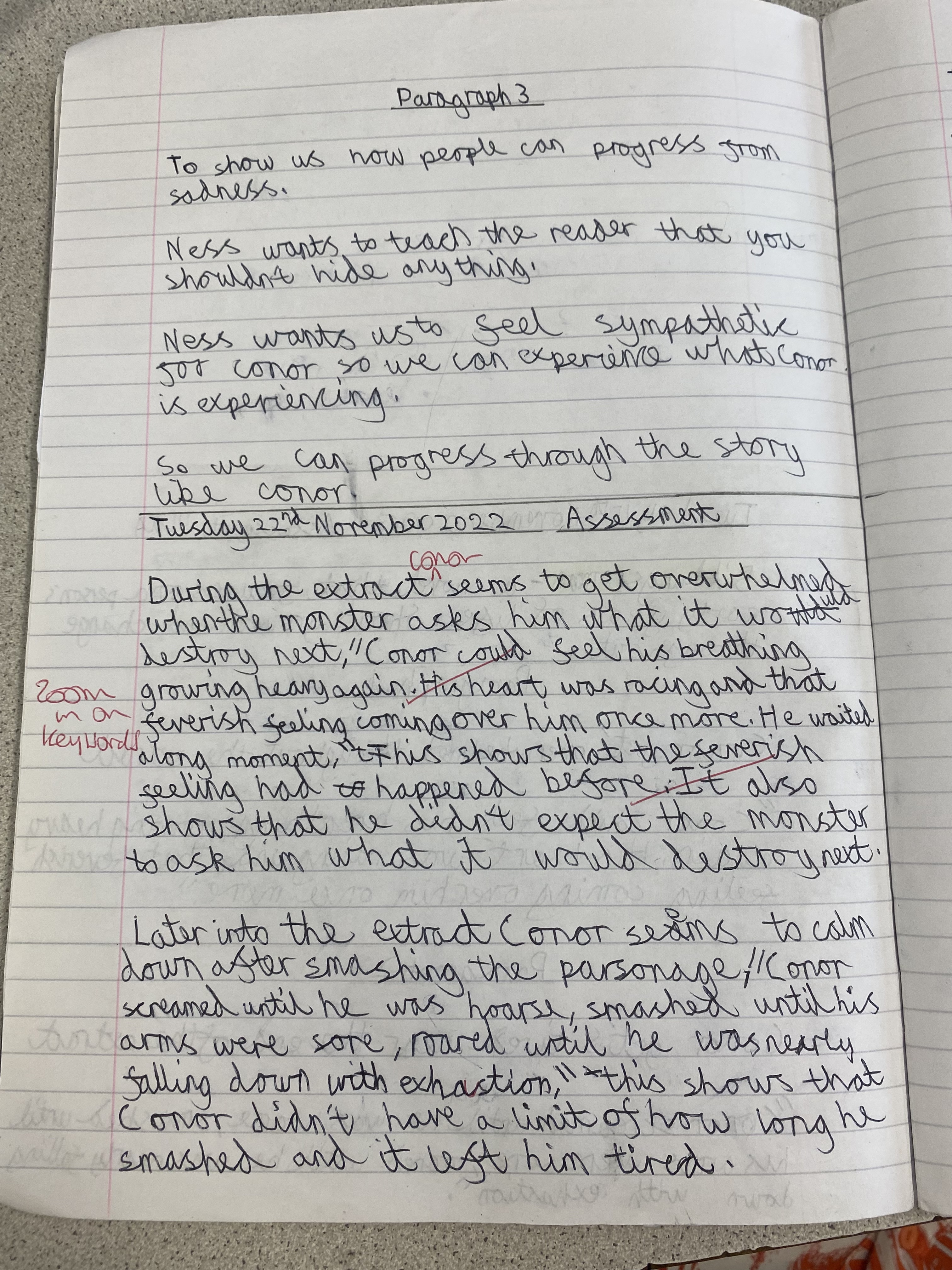
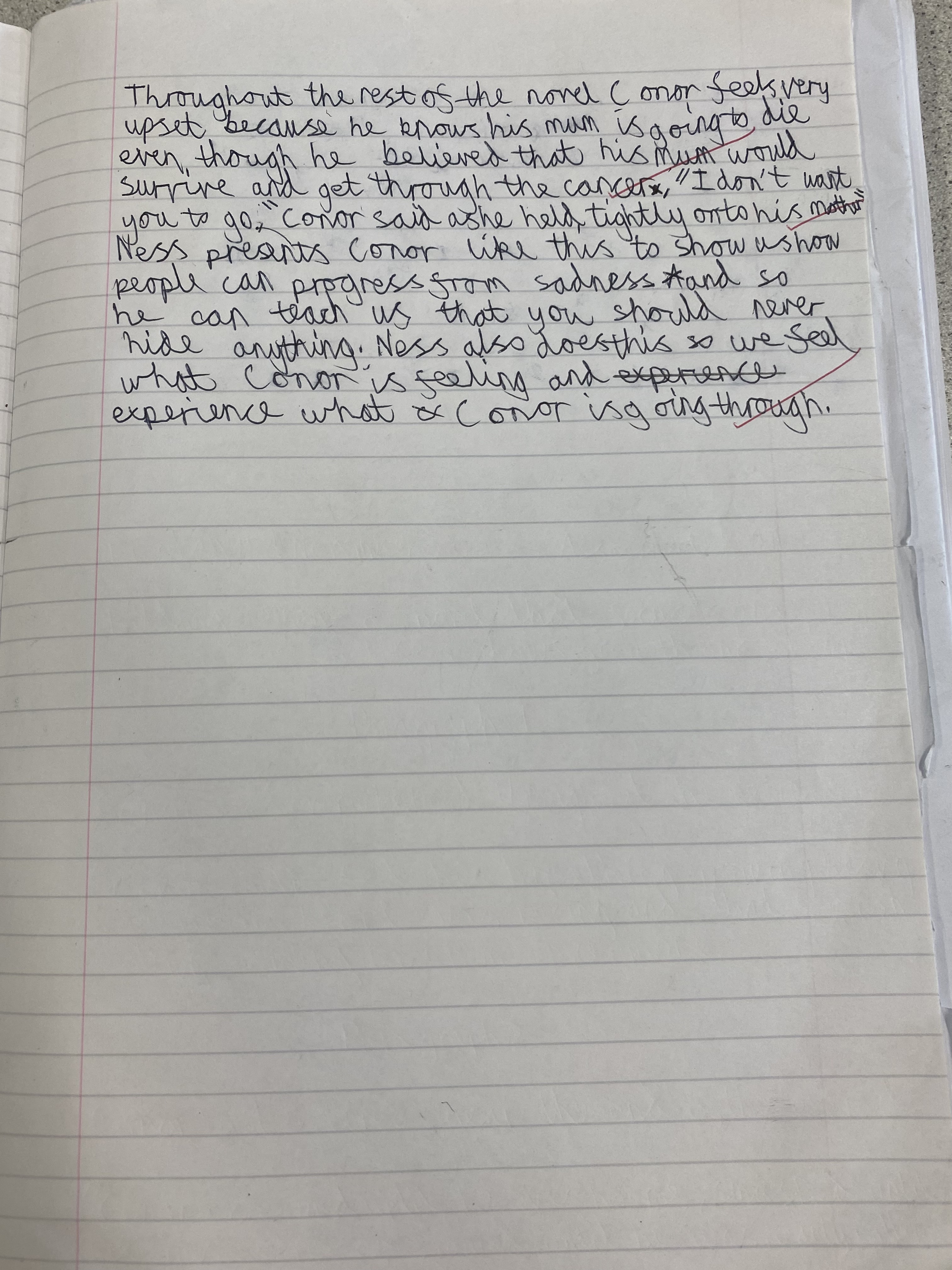
Student B
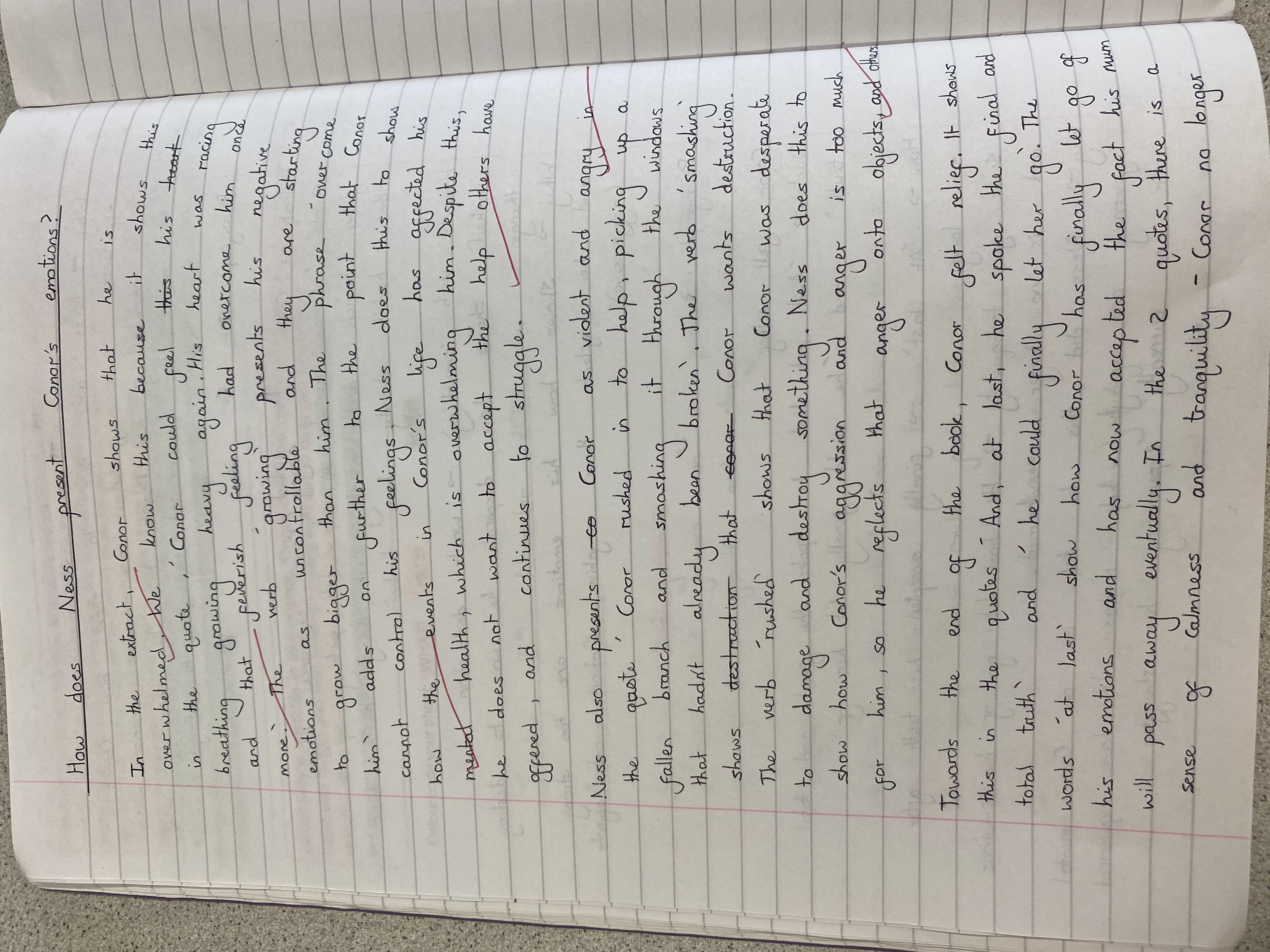
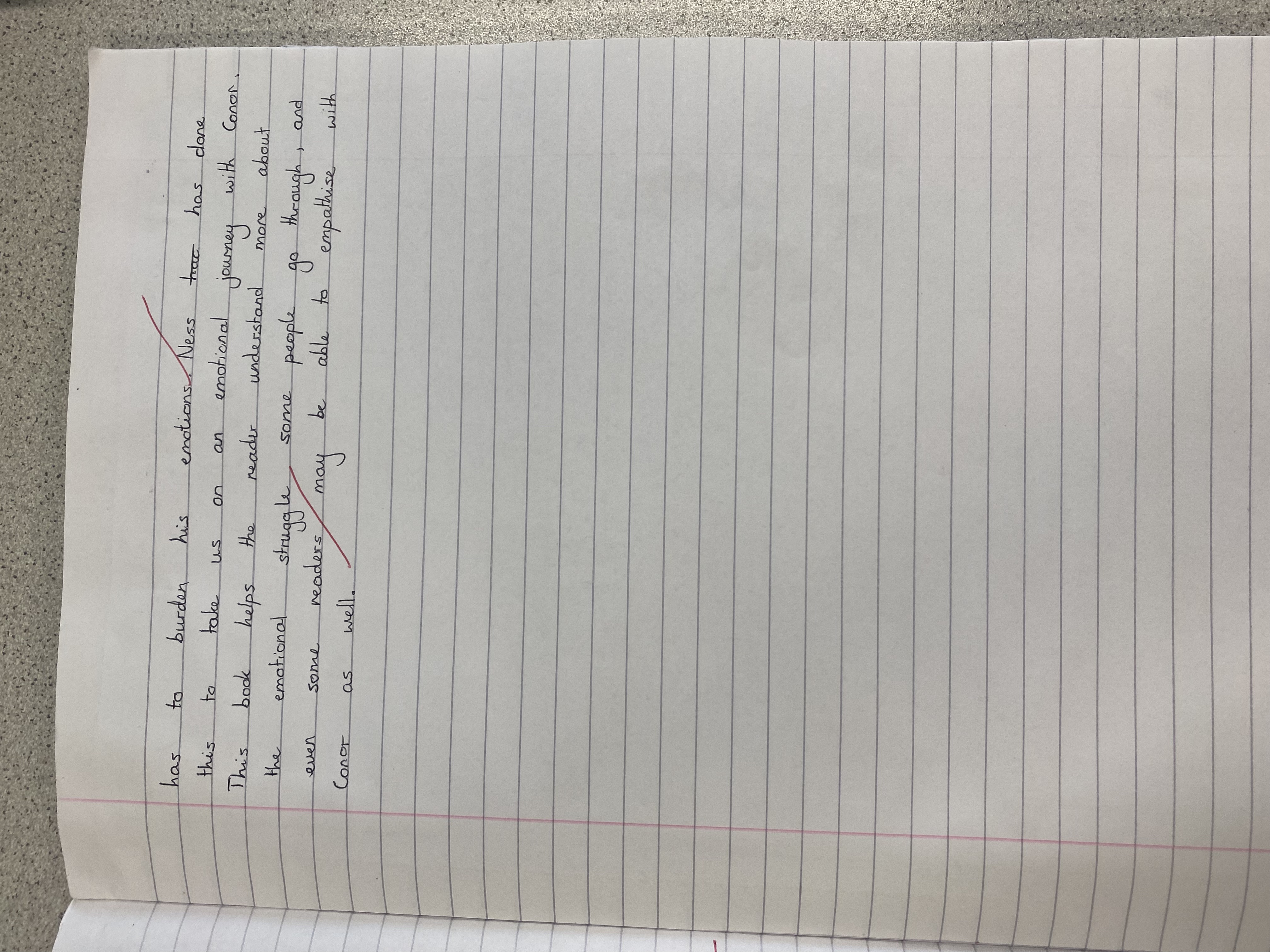
What follows is our… assessment (argh, that word!) of the problems with working in this way in subject English.
None of this is directed as criticism of any of the hardworking students or teachers involved, and the work is included here with the kind permission of the school's teachers, who we continue to work with on their KS3 assessment approach. We have huge admiration for their work, and for their eagerness to look beyond assessment practices that they themselves have found constraining and dispiriting.
Un-disciplinary practice
One major concern for us about this way of working is that the GCSE-style assessment piece has defined what students have been doing from lesson to lesson. The writing is a much narrower, less personally engaged and varied version of what writing resulting from a novel study might otherwise look like. The assessment has been the first thing to be determined in the planning of the unit, and then the unit has been shaped towards it. In our last blog, we wrote about how this assessment model significantly reduces the scope of the curriculum and this is seen here. These students are year 7s studying a novel, so we would expect there to be plenty of ranging around the bigger picture subject knowledge involved in novel study: narrative, style, genre, structure and themes and ideas. We’d hope to hear a personal voice. There might be scope for creative and recreative writing, for writing in the role of the author and much more. Above all, we’d hope to see students recognising what makes this novel special – its most interesting and enjoyable qualities compared with other novels they might have read.
Instead, because the unit has been slanted towards the assessment, students here are working only with tiny details taken from the extract given and just one example from elsewhere in the novel. As a result, both of the student responses are strangely out of context and in the first two paragraphs of each, the actual storyline is incidental; we know Conor is angry and overwhelmed, according to the responses, because of words in quotations taken from the extract, rather than because of what is happening in the novel at the time, or indeed what actually happens to the character across the novel. And even thinking about the extract itself, the word-level detail quoted by the students is often tangential to what is most special and interesting about the writer’s techniques in the novel as a whole. It could be about any writer, of any text.
We can see how this writing for assessment is being shaped and encouraged during the assessment preparation lessons, particularly the annotations of the extract. Interestingly, the responses become a much more genuine reading of a novel in the final paragraphs of both when, freed from picking at the extract for word classes, students write about the bigger picture: ‘Ness has take[n] us on an emotional journey’, writes Student B, in a comment that would feel at home in an introduction to a more extended piece of writing about a novel. This is a really valid, interesting observation about the text as a whole and what is most significant about it.
The assessment, the work of the unit and the written feedback given (which we’ll blog about separately in future) has made the students’ thinking and writing strange and ‘un-disciplinary’ – in other words, not what we would associate with high quality thinking and writing about literary texts in subject English.
Anti-assessment assessment & the illusion of learning
It’s true that these exercise books look nice and, at first glance, seem impressive. The students clearly care about their presentation, filling the space in the books, using highlighters neatly and so on. These are hard-working, very competent writers. If these were our books and our senior leadership were completing book checks, we’d feel confident that they’d be pleased with what they saw. There is a sense of progress; of learning building up to a coveted ‘end point’. But if we look closely at the almost identical preparation and response, the learning that appears to have happened here is really something of an illusion.
As teachers comparing exercise books (as we did across many more examples from the same cohort), it’s very hard to tell individual students apart. And this isn’t a success story in achieving parity amongst mixed attaining students; it tells us almost nothing formatively useful for English. As a subject in which students must learn how to study texts and offer individual, valid, thoughtful, creative, developed responses, this is actually anti-assessment assessment: it has shut down the possibilities of variation in student response to the point that it tells the teacher nothing other than that students have been diligent in listening and copying down what they have said, or copying a formulaic response, then reproducing it performatively when required. Because of this, it is unclear whether these students have really learned anything about novel study from this unit, or even this particular novel and its unique features, and, if they have, whether they would be able to apply it to another novel.
What’s going wrong?
Surely the biggest factor now affecting how assessment looks in schools is accountability. A lack of practical guidance from the DfE and contradictions between Ofsted documentation and actual experiences of inspection have caused some of this fear of the unknown, and schools seem to feel more secure if they have regular summative assessments and data collections showing trends, regardless of how shaky the framework for collection or the integrity of the assessment task might be. Some of this pressure comes from the backwards impact of mostly 100% exam GCSEs. ‘High stakes assessment,’ says The Times Education Committee’s 2022 report, ‘…has become the tail that wags the dog, then wraps itself around the creature’s neck and strangles it nearly to death’.
During each of our school visits last year, we inevitably asked about data collection, because it can be such a significant feature of many teachers’ day-to-day lives. These collections are usually leadership-imposed and all of the responses from English teachers, without exception, raised questions about their necessity and effectiveness. The systems themselves vary in their implications for subject English, but all play a role in determining the shape and scope of the curriculum. Servicing such frequent reporting systems has played a role in the emergence of the dominant high stakes assessment model we’ve outlined: supposedly to keep things valid and reliable, teachers are often asked to give students ‘the assessment’ to generate data for collections. In order to ensure that this piece of assessment has the strongest results possible for reporting, teachers give students ‘the formative assessment’. Thus the word ‘assessment’ has become tied to single pieces which are summatively assigned a number, word or colour for reports.
So what next?
When we talked to teachers in our project departments (both following variants of the dominant assessment model outline), we realised that the bigger picture of genuine and ongoing formative assessment had been lost in the relentless drive towards the final assessment piece of each unit. The focus on displaying a very narrow range of knowledge and skills had narrowed teachers’ understanding of what formative assessment is: it had become another highly scaffolded piece of writing deployed in service of the end of unit assessment. It seems it is often part of school marking policies, too: teachers must mark ‘the formative assessment’ in the middle of the unit and ‘the formative assessment’ must link to ‘the summative assessment’ at the end. All of this prioritises accountability, placing it above the individuality of each subject and the quality of the curriculum for students. Sadly, the accountability it prioritises also involves forms of assessment that are not valid or reliable in and of themselves, and end up distorting and damaging the curriculum.
We soon realised that in order to tackle the problems with the dominant assessment model we had to start by addressing the question of formative assessment: what does genuine formative assessment in English look like and what is its purpose? We were particularly interested to explore what formative assessment might look like when our project teachers removed end of unit assessments. Come back for blog 3, where we’ll grapple with this some more and offer you insights into what happened when changes were made!
Appendix
Assessment preparation work for two students.

